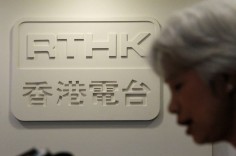New | Why Legco should approve higher funding for RTHK headquarters
Robert Chua says inflation and RTHK's broader scope of operations have inevitably raised the budget for its new headquarters, but the spending for good-quality TV will be worth it

This Wednesday, the Legislative Council's public works subcommittee will consider RTHK's request for a substantial increase in public funding for its new headquarters, from HK$1.6 billion to HK$6.1 billion. Many people have objected to the higher budget without studying the facts and rationale behind it. I, for one, think the increase is reasonable.

I expect its new channels will be similar to the credible and popular Discovery channels. One is expected to produce and air programmes on topics usually shunned by commercial TV channels - for example, shows specifically for minorities and the elderly, on art and culture, and relays of the regular Legislative Council meetings. Some people may deem these boring, but they will cater to a more diverse audience.
RTHK, which started operating in 1928 as a radio broadcaster, has been housed at Broadcast Drive in Kowloon Tong since 1969, two years after TVB started there. Soon after that, it began working with the Education Bureau to produce ETV, a series of programmes aimed at students, working with one TV studio. In the mid-1980s, it acquired three studios previously used by Commercial Television and TVB.
It is unproductive to have RTHK operating from three locations. Besides, it is running out of space, and has resorted to using containers to operate a couple of radio channels. Any major TV station in mainland China is better equipped than RTHK; it is embarrassing if it has only a small broadcasting centre.
Further, it is misleading to claim, as some have, that the HK$1.6 billion estimate was made in 2009. It was in fact made in 2000, based on its then scope of operation - mainly a radio broadcaster and a TV "production studio" making limited programmes to be aired on TVB and ATV. Today, it is expected to also operate three TV channels.
Also, the estimate of HK$1.6 billion made in 2000 did not include a 20 per cent buffer for inflation. By contrast, its new estimate of HK$6.1 billion budgeted for this 20 per cent, and also HK$500 million for contingencies.